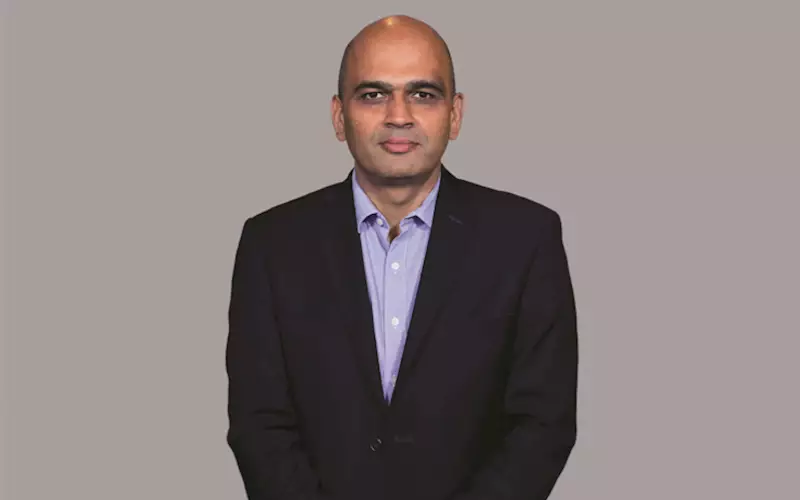How digital print is moving beyond CMYK with brilliant new colours
Printing may have a history rooted in CMYK, but the move to digital print and digital enhancements has ushered in the ability to print a new range of colours, specifically metallic and whites, while also increasing quality, flexibility and speed, says Raj Rishi, managing director at Xerox India
26 Oct 2018 | By PrintWeek India
In a challenging economic climate where many industries are struggling with digital transformation, the print industry has an ace up its sleeve. It comes in the form of digital printing, helping print companies to reinvigorate themselves by offering their customers more features, better quality, and greater flexibility at lower costs. Automation and streamlined workflows are also driving cost and process efficiencies in the creation, campaign management and manufacturing process. In this article, we take a look at three ways that the printing industry is moving beyond CMYK.
Printing may have a history rooted in CMYK, but the move to digital print and digital enhancements has ushered in the ability to print a new range of colours, specifically metallics and whites, while also increasing quality, flexibility and speed. It’s a technology that customers have been crying out for, and an USD 813 million market that’s predicted to grow at an impressive 27% through 2020.
The digital market is born out of a demand to make money, for print companies to command premium prices and offer better value for their clients by providing digital printing enhancements. It’s a market where specialty dry ink technology is leading the way.
Printers are currently using specialty dry inks to innovate, and a range of new colours aren’t the only advantages. The latest specialty dry ink stations are opening up new opportunities for rich layering and eye-catching embellishment, with unparalleled vibrancy and a smoother finish that boasts a more even sheen, adding extra depth and a more consistent look.
Introducing specialty dry inks
Specialty dry inks offer an increased colour gamut, and efficiency is set to improve, with printers capable of printing up to 120 pages a minute. Printing resolutions of 2400dpi also means companies won’t have to sacrifice quality in the quest for speed.
This can help print companies to provide short runs, quick turnaround and greater personalisation; printing on demand is a possibility, and printers can act as a virtual document repository while also offering improved options for just-in-time manufacturing. When combined with advanced automation and streamlined workflows that cut the number of human touches required to receive, plan, execute and deliver print jobs, all this makes a massive difference to running costs, productivity and business supply chains.
White is the new black
Market research by Keypoint Intelligence has indicated that over 80% of European respondents see white as the specialty colour they need most and India is not too far off. It’s a colour that Xerox has already introduced, with the company’s latest White Dry Ink for the Xerox iGen 5 Press print station making it possible to print incredibly bright whites on coloured substrates and packaging.
The White Dry Ink provides a unique solution, more than doubling the brightness and opacity of competitive inks for digital presses and setting a new industry benchmark. Better yet, that benchmark is delivered after only one or two passes, surpassing the four or more passes traditionally required by competitive digital presses, saving on time, resources and money. Developing such inks presents a particularly tough challenge, requiring a number of hardware and software changes.
Creating excitement with silver and gold
Lessons learned when creating White Dry Ink have also been put to good use when it comes to other colours beyond CMYK, with smaller EA Toners making it possible to deliver metallic silver and gold – two of the other most in-demand colours – using specialty dry inks as well.
Digital foil stamping has previously provided an alternative for print companies wanting metallic colours and high quality, but metallic specialty dry inks provide a better blend of quality and affordability, incorporating flecks of metal to deliver outstanding image quality with a true metallic appearance. As with White Dry Ink, Xerox’s metallic specialty dry inks are capable of delivering stunning results in a single pass, saving money and resources and helping print companies to take on more short run, short turn digital jobs without compromising on quality.
It’s time to move beyond CMYK
With benefits like these, the case for moving beyond CMYK is clear. These are features that buyers are more than willing to pay for, with printing companies indicating a willingness to pay a premium of between 24 and 89 per cent over CMYK. With a 2016 InfoTrends study indicating potential profit margins on digital print enhancements as high as 400%, it’s an investment well worth making, and as a result the same InfoTrends report predicts the digital print market growing at a compound annual growth rate (CAGR) of 27% through to 2020.
If the switch to digital print is accompanied by greater automation, we could also see advances in creativity, with craft and automation proving complimentary forces. User-friendly technology has sparked a process of democratization, and creative automation is becoming more accessible to print professionals every day.
Only a small fraction of the market has already converted to digital methods, with just one half of one per cent of today’s colour pages produced on a digital press or using a digital process. It’s already a thriving industry, however, and predicted growth and the potential for printing companies result in an opportunity that’s simply too good to miss.











 See All
See All